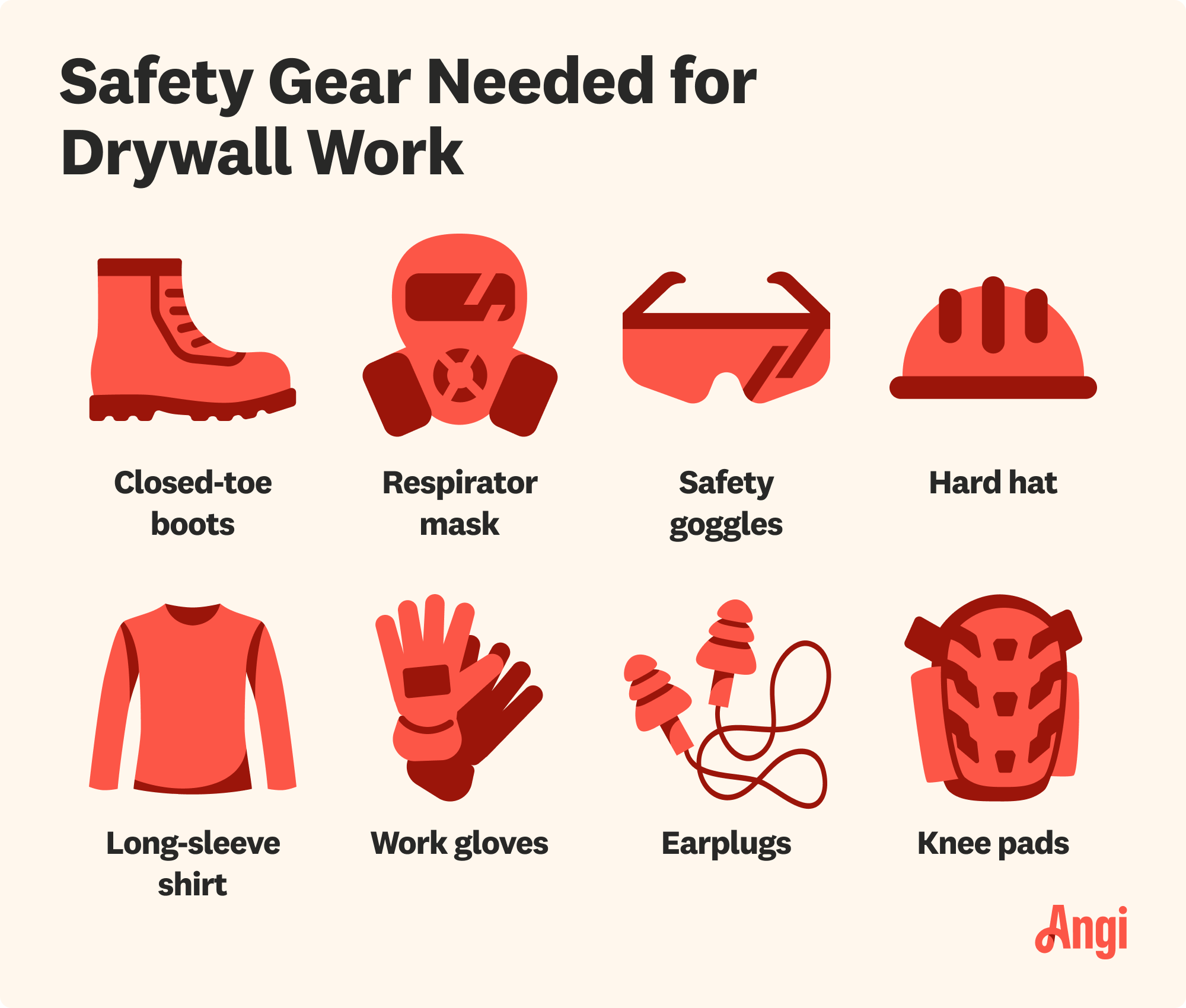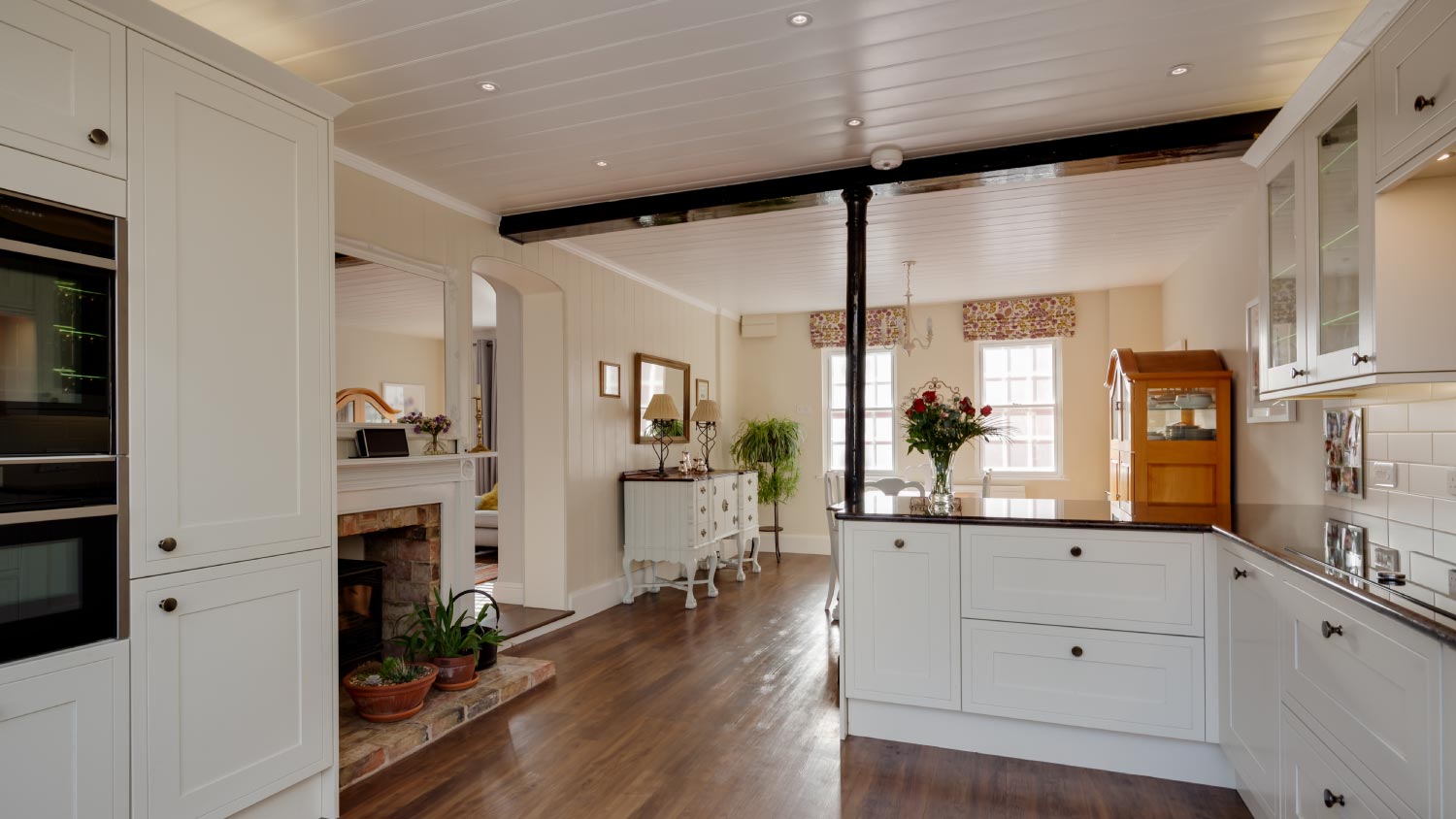
Installing drywall is the most common way to finish your home’s interior. Use this drywall installation cost guide to see what your project is likely to cost.
The type of drywall mud and a variety of other factors influence drying time


The three most common types of drywall mud are pre-mixed, setting-type, and lightweight joint compound.
Pre-mixed and lightweight joint compounds take at least 24 hours to dry per coat, but setting-type can take as little as 20 minutes to dry.
Create a room temperature between 60°F and 70°F to speed up drying time.
Apply thin coats of drywall mud to speed up how fast it dries.
Getting any type of home project done quickly always feels like a win, but sometimes you can’t jump ahead even if you’re in a rush. Drywall mud, also known as joint compound or simply "mud," plays a crucial role in the process of finishing and repairing drywall surfaces. How long does drywall mud take to dry? Whether you're a DIY enthusiast or choose to hire a professional drywall installer near you, understanding how long drywall mud takes to dry is essential for planning your project.
In this article, we'll explore the factors that influence drying times, the different types of drywall mud, and tips to expedite the drying process.
The time it takes for your drywall to dry will depend heavily on the type of mud you use. Here is a rough estimate of drying times for different types of drywall mud:
| Mud Type | Description | Average Drying Time |
|---|---|---|
| Pre-mixed joint compound | Convenient for beginners and small projects, but it may have a longer drying time than other types. | 24 hours per coat |
| Setting-Type Joint Compound | Hardens quickly, making it great for deep fills, patching, and working in high-humidity conditions. | 20 to 45 minutes |
| Lightweight Joint Compound | Not the quickest drying time, but it’s easier to sand and is best for final coats or high walls and ceilings. | 24 hours per coat |

Several factors can influence how long it takes for drywall mud to dry. Understanding these variables will help you estimate drying times more accurately:
Type of mud: As mentioned earlier, the type of drywall mud you use significantly affects drying times. Pre-mixed mud tends to dry more slowly than setting-type joint compound.
Humidity: Humidity levels in your environment play a crucial role. Higher humidity can slow down drying, while lower humidity speeds it up. Consider using a hygrometer to monitor humidity.
Temperature: Warmer temperatures generally promote faster drying. Colder environments can extend the drying process. Aim for a room temperature between 60°F and 70°F for optimal results.
Application thickness: The thickness of the mud layer applied to the drywall matters. Thicker layers take longer to dry, so use thinner coats for quicker results.
Ventilation: Proper ventilation can accelerate drying. Ensure that the room is well-ventilated with fans or open windows to circulate air.
Drywall type: The type of drywall you are working on can affect your drying time. Standard drywall and moisture-resistant drywall may have slightly different drying rates.
Hot drywall mud is designed specifically to dry quickly, making it ideal for when you're looking to get a project done fast. Because it's fast-drying, make sure to practice on a small area first to get the right thickness.

When it comes to expediting the drywall mud-drying process, a few strategic approaches can make a significant difference. These tips not only help to save time but also to ensure a smoother finish on your drywall:
Choose the right setting type: If your project's timeline is a critical factor, consider using a setting-type joint compound. This type of mud is designed to dry rapidly and is an excellent choice when you need to move quickly. It starts setting within 20 to 45 minutes, allowing you to apply subsequent coats on the same day. However, remember to work efficiently, as it doesn't provide the same extended working time as pre-mixed mud.
Optimize room conditions: The environment in which you're working plays a substantial role in drying times. To encourage faster drying, maintain ideal room temperature and humidity levels. Aim for a room temperature between 60°F and 70°F and humidity levels around 40% to 50%. Use dehumidifiers or heaters if necessary to regulate humidity and ensure a consistent temperature throughout the drying process.
Thin coats for speed and smoothness: When applying drywall mud, it's tempting to use thicker coats to save time, but this can actually slow down the drying process. Instead, opt for thin coats of mud. Multiple thin coats will dry faster and more evenly than a single thick one. Thin coats also reduce the risk of cracks and imperfections in the finish levels on your drywall.
Enhance ventilation: Proper ventilation is key to expediting drying times. Improve airflow in the room by strategically placing fans to circulate air over the drying mud. Additionally, consider opening windows or doors to create cross-ventilation. Improved ventilation not only speeds up the evaporation of moisture but also helps maintain a balanced room environment, reducing the risk of bubbles or blemishes in the mud.
Use heat lamps carefully: In certain situations, heat lamps can be used to expedite drying, especially in colder or high-humidity environments. However, use them cautiously to avoid overheating the mud, which can lead to cracking or other finish imperfections. Keep heat lamps at a safe distance from the drywall surface and monitor the temperature closely. It's advisable to consult manufacturer guidelines for the specific type of drywall mud you are using, as some products may not be suitable for heat exposure
"The appraiser was incredibly professional and efficient. She provided prompt service and a detailed appraisal report, showcasing her attention to detail. I was impressed by her professionalism throughout the process. Highly recommend her services!
Just had two mowings so far but the guys have been excellent so far.
David and his team did an excellent job rebuilding our two decks. His employees were very courteous and they were respectful of the property. David is easy to work with. I would recommend them for your next project.
Professional Painting did an excellent job. The painters did an excellent job, fixing any drywall imperfections first, which then showcases a great paint job. The owner is also a pleasure to work with. He provided a detailed quote and in a timely manner and the resulting big was exactly as...
From average costs to expert advice, get all the answers you need to get your job done.

Installing drywall is the most common way to finish your home’s interior. Use this drywall installation cost guide to see what your project is likely to cost.

Whether you’re trying to keep noise in or out, soundproofing materials are the way to go. Use this guide to see how much it costs to soundproof a room.

Installing beadboard ceilings is a great DIY project. Learn what to expect cost-wise from this project, whether removing or covering a popcorn ceiling.

If you’re wondering who to call for drywall repairs, look no further. This drywall repair contractor hiring guide will help you choose a contractor.

When hanging objects, you will use different types of drywall anchors. Use this guide to determine which anchor to use and when.

From incorrect mixing to poor weather conditions, there are a few reasons for joint compound not sticking to drywall. Learn how to avoid this drywall problem.